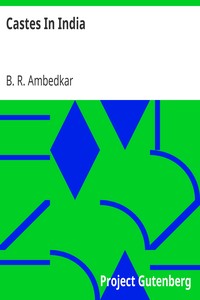| Summary |
"Castes In India" by B. R. Ambedkar is an academic paper presented as part of his contributions to the field of anthropology, specifically focusing on the caste system in India. Written during the early 20th century, this work delves into the complexities and origins of caste, examining it as an intricate social institution that shapes various aspects of Indian society. Ambedkar aims to shed light on the mechanisms, genesis, and development of caste as a social construct within Hindu society. In this significant piece, Ambedkar discusses the concept of caste and how it functions within a broader social framework. He critically analyzes definitions of caste from various scholars, emphasizing that endogamy—the practice of marrying within one's own group—is fundamental to the caste system. The author explores the historical and cultural influences that led to the establishment of caste, asserting that it arose from the desire for social stratification among classes, particularly among the Brahmins. Through a detailed examination of customs such as widow burning (Sati), enforced widowhood, and child marriage, he posits that these practices not only sought to maintain endogamy but also served to regulate the population within castes. Ultimately, Ambedkar’s work offers a comprehensive analysis of caste as a social barrier, fundamentally questioning its validity and the ongoing struggles surrounding caste identity and reform in India. (This is an automatically generated summary.)
|

